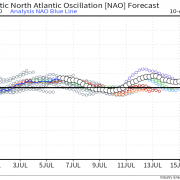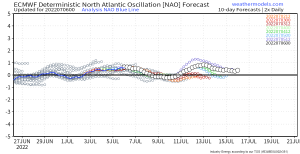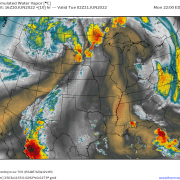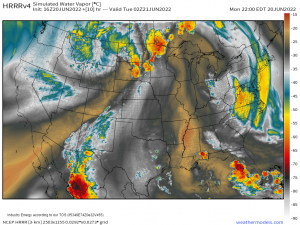
What Is CAPE?
CAPE is a term you’ll hear a lot especially in severe weather season. CAPE stands for Convective Available Potential Energy and is a way of quantifying how much energy there is available in the atmosphere for thunderstorms to develop and strengthen. Thunderstorms are fueled by the buoyancy of air parcels in the atmosphere. An air parcel is a basketball sized parcel of air whose properties can be analyzed and tracked. Air parcels can have properties that can be either similar or different than their environment (the rest of the atmosphere at a given location) depending on the situation. The properties we care about most when trying to determine CAPE are temperature and dew point. Be sure to see my article explaining the dew point if you’re unfamiliar with that concept.

When CAPE is present and air parcels are buoyant, they rise rapidly, creating bubbly clouds that can eventually become thunderstorms.
Because convection relies on buoyancy, it’s going to be important that we know which types of air parcels are relatively heavy (dense) and which types of air parcels are relatively light. For this, we turn to chemistry. Cold air is much denser than warm air because the warmer a gas gets, the more energetic and diffuse the molecules become. The more diffuse the molecules become, the less dense that gas is. The amount of moisture in the air can also impact density. The molecules that make up the majority of the air (oxygen and nitrogen) both exist in pairs. This means that a diatomic oxygen molecule has a weight of 32 and a diatomic nitrogen molecule has a weight of 28. A water vapor molecule on the other hand has an atomic weight of 18, much lighter than oxygen or nitrogen. The more water vapor molecules there are present in a particular part of the atmosphere, the fewer oxygen and nitrogen molecules are present. This means that an air parcel with lots of water vapor will be lighter than a very dry air parcel.
Now that we’ve established that there are density differences between different air parcels with different temperatures and or dew points, we can begin discussing how to figure out how much CAPE there is in the atmosphere. To get thunderstorms, also known as convection, you need convective instability. Convective instability comes from the ability of a parcel of air to rise through the atmosphere unaided by any sustained lifting mechanism (i.e. a storm system that is constantly lifting air parcels higher into the atmosphere). When air parcels are buoyant, they will rise towards the top of the atmosphere of their own accord, and often will accelerate just as light air bubbles accelerate upwards through a much denser body of water. In the atmosphere, as these air parcels rise, they cool and condense into clouds and then precipitation. When these parcels rise fast enough to separate the electrostatic charges in the atmosphere, you get lightning.
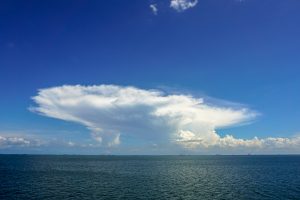
As air parcels rise towards the stratosphere, they become stable at the point where they are no longer warmer (more buoyant) than their surroundings. This phenomenon creates anvil clouds such as this one.
When warm, moist air from the surface is forced to rise just a little bit, due to a cold front for example, it enters a slightly different environment. If the new environment is cooler and drier (as it usually is when you get higher into the atmosphere), the parcel that just rose from the surface will become buoyant as it is less dense than the surrounding environment. As it becomes buoyant, it will begin rising rapidly through an ever colder environment. Eventually, the parcel will cool to the temperature of its environment and become stable again. You can see exactly where this happens if you look at how a thunder cloud spreads out at the top. This is a result of air parcels reaching the height at which they are convectively stable. When parcels are stable, they stop rising and thus spread out laterally due to the parcels rising up and displacing them from below.
Now we know why warm, moist air is so helpful for thunderstorm development. Its light nature allows it to be buoyant even when the atmosphere doesn’t cool or dry as much with height. CAPE is determined by a combination of the temperature and the dew point at the surface as well as other factors aloft that determine how buoyant a parcel might be.
Now that you know what CAPE is, how it’s determined, and why it’s helpful, check out the many CAPE maps that are available on weather.us!
Feel free to send me an email if you have any questions about the weather you’d like me to explain! jack@weather.us
-Jack Sillin





